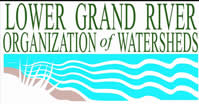Lower Grand Watershed Interactive Tool (WIT) - Water Science Education K-12

Lower Grand River 319 Project
Nonpoint Source Pollutants Water Science Education
Interactive Mapping
Storm Water Management
Low Impact Development
Government Resources
History of the Watershed
Create a Watershed Management Plan
FYI on Local Water Issues
Rain Gardens
LGRW Implementation Project
Our state public waters are very important to our quality of life.
Water education helps us to maintain healthy natural resources.
The WIT can assist teachers in their efforts with the Strand V: Using Scientific Knowledge in the Earth Sciences materials.
Click on the links below for more information:
K - 5th Grade
V.1 Geosphere
Middle School
V.1 Geosphere
V.2 Hydrosphere
High School
V.2 Hydrosphere
Click here to view the source of these materials and other resources.
Strand V.1: Using Scientific Knowledge in the Earth Sciences - Geosphere.
- Demonstrate ways to conserve natural resources and reduce pollution through reduction, reuse, and recycling of manufactured materials.
-
Lesson on Pollution Pete Patrol - Lesson on Cleaning Up
- Tour the City of Wyoming's Clean Water Plant to learn how wastewater is treated. Also visit their Hall of the Great Lakes to learn specifics on the lakes and how our everyday use of water affects water quality.
- Lesson on N, B, & T: Pollutants Three
-
- Describe major features of the earth's surface.
-
Lesson on Wonderful, Waterful Wetlands - Interactive mapping section - land use/land cover layers
-
Strand V.1: Using Scientific Knowledge in the Earth Sciences - Geosphere.
- Describe and identify surface features using maps.
- Explain how rocks are broken down, how soil is formed, and how surface features change.
- Factsheet on Watersheds
- Graphic of the Rock Cycle with text explaining rocks in Michigan
- Lesson on Water - Through and Through
- Explain how technology changes the surface of the Earth.
- Interactive mapping section - land use/land cover layers, impervious surface layers
Strand V.2: Using Scientific Knowledge in the Earth Sciences - Hydrosphere.
- Describe how surface water in Michigan reaches the ocean and returns.
-
Factsheet on Watersheds - Factsheet on the Water Cycle
- Map with paths of water leaving the Grand River Watershed
- Tour the City of Wyoming's Clean Water Plant to learn how wastewater is treated. Also visit their Hall of the Great Lakes to learn specifics on the lakes and how our everyday use of water affects water quality.
-
- Explain how water exists below the earth's surface and how it is replenished.
-
Factsheet on Watersheds - Factsheet on the Water Cycle
- Graphic of the Water Cycle that includes drinking water and wastewater
- Factsheet on Groundwater
- Lesson on Aquifers and Recharge Areas
-
- Describe origins of pollution in the hydrosphere.
Strand V.2: Using Scientific Knowledge in the Earth Sciences - Hydrosphere.
- Identify and describe regional watersheds.
-
Lesson on Biography of a River - Interactive mapping section - explore watershed boundaries layer
- Map of the Lake Michigan Watershed
- Map of the Grand River Watershed in Michigan
- Map of the Grand River regional watersheds
-
- Describe how human activities affect the quality of water in the hydrosphere (everyday activities affect water quality).
-
Factsheet on Water Quality - Lesson on Pollutants: How Much Total or How Much Per Unit of Water
- Lesson - Download current water quality sampling results for the Grand River and have students use worksheet to compare results to common levels
- Lesson on Bioassessment of Streams
-
Where did these materials come from?
- Environmental Protection Agency, Water Sourcebooks
- Michigan State University Extension Service, This Land is Your Land - Lesson Plans for Land Use
- Grand Valley State University, Annis Water Resources Institute
- City of Wyoming Clean Water Plant
Other Resources:
- Great Lakes T.E.A.C.H.
- Acorn Naturalists
- EPA Stormwater Month Outreach Materials
- MI DEQ publications
Contact:
Grand Valley Metro Council
678 Front St. NW, Ste. 200 Grand Rapids, MI 49503 (616) 776-3876
[email protected]
